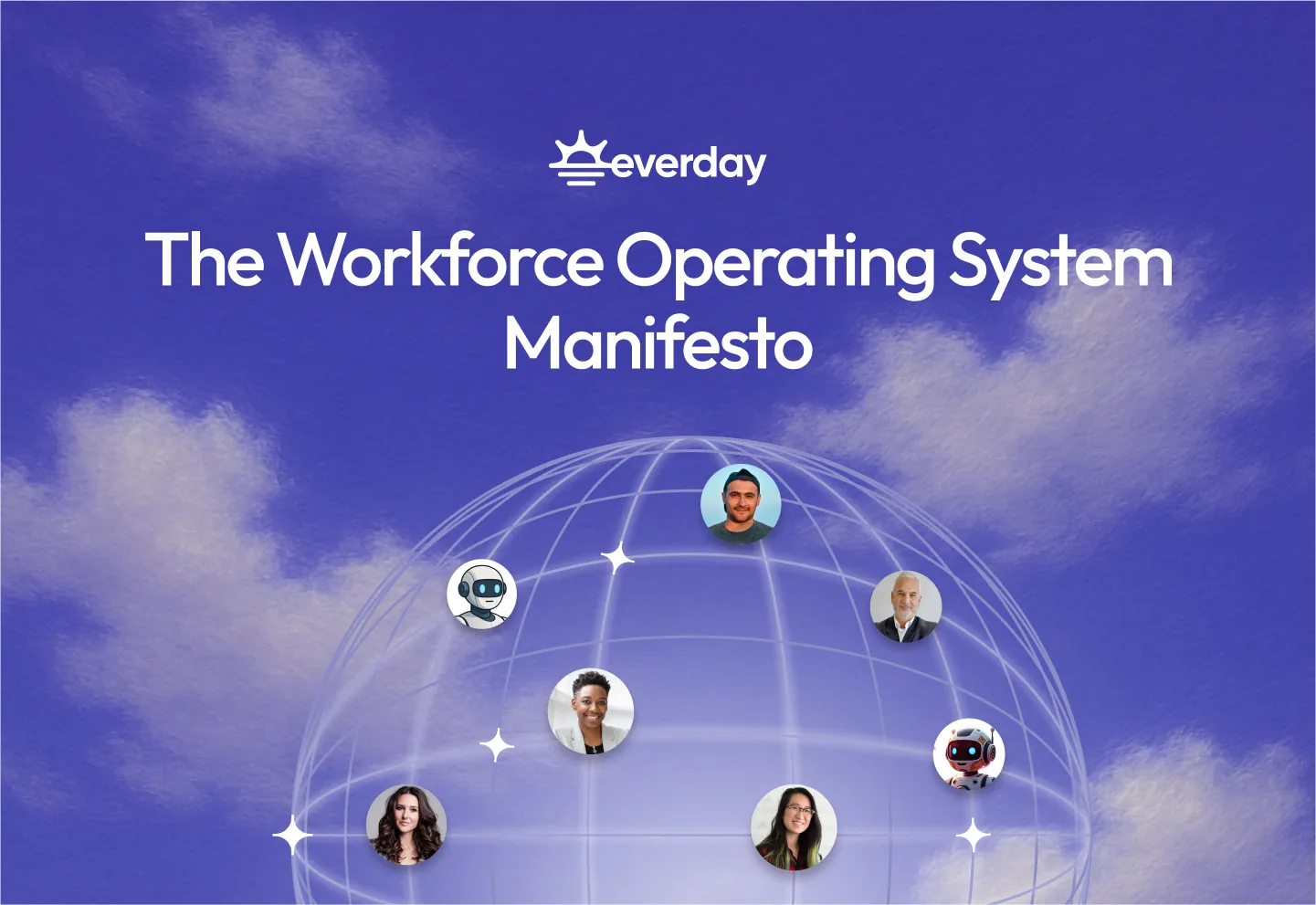
A skill matrix isn't just a spreadsheet with skills and levels; it's a strategic map for navigating your team's capabilities, discovering hidden gems, and identifying future needs in a simple and transparent way. However, extracting its full value can be challenging. The process of uncovering the most up-to-date skills, validating them through performance review cycles, and ultimately deriving actionable insights might seem like an impossible mission - one that could take months of hard work.
1. Define your objectives
As each company uses a skills matrix for different purposes, start by aligning with the leadership team or peers on what you want your skill matrix to accomplish.
This alignment will help define the best structure for it and determine how often the data must be updated. Whether it's identifying skill gaps, creating career paths, succession plans, or running internal mobility processes, having clear goals ensures your matrix not only reflects current competencies but also actively drives strategic decision-making aligned with your company's growth.
2. Identify necessary skills
The heart of a skills matrix are Skill Sets, which are the latest skills necessary to perform a specific role. This might sound easier than it actually is, as it requires knowledge of each area and role, as well as keeping an eye on emerging trends. It can be helpful to have an in-depth discussion with each area leader to ensure you're speaking the same language and that the Skill Sets reflect the most accurate needs of each role.
For a smoother and quicker process, you can try our Skill Sets creator on Everday platform. As it takes a role and job description, and our AI scans our 14,000-skill database to suggest the most accurate skills and levels for that role, seniority, and even industry or region.
3. Establish a rating system
Now, we need to define levels of each skill based on the seniority, company needs and goals for your company. We suggest establishing a standardized rating system across the whole organization to ensure consistency across teams and departments.
We recommend using the system suggested by ESCO, as it provides a standardized language for companies in the EU. Here are the levels they suggest:
- Novice: Basic awareness; can recognize skill in context.
- Beginner: Can perform simple tasks under supervision.
- Intermediate: Able to handle common tasks without supervision.
- Proficient: Can handle complex tasks independently.
- Advanced: Deep understanding, can lead standard tasks and mentor others.
- Specialist: Extensive knowledge, can innovate and lead complex projects.
- Expert: Rare expertise, can influence and set standards.
- Master: Recognized authority; contributes to advancing the skill at an industry level.
4. Collect data
Collecting accurate data is crucial for obtaining precise results and ensuring everyone in the organization sees the value of this process. To get a comprehensive view of your team members, combine internal and external information sources, such as:
- Self-assessments: Questions related to employees' experience, rather than just having them rank their own level, help provide a more accurate overview of their skills.
- 360-degree assessments: To calibrate results, it's important to gather opinions from leaders, peers, and direct reports. This approach allows for multiple perspectives and helps reduce potential bias from considering only one view.
- Resumes: An individual's past experience is valuable for uncovering hidden skills they've developed and mastered. These skills can be useful for further development or for performing different roles within the organization.
- LinkedIn: While not every member may have an up-to-date or fully accurate profile, LinkedIn can be a helpful source to add information about certifications, education, and work experience to their skills profile.
{{cta-component}}
5. Analyze the Results and Develop an Action Plan
With our skill matrix complete, you can now create a targeted action plan to maximize its value. Using the same data, you can run different processes such as:
- Internal mobility: Get a quick overview of which team members are the best match for a new vacancy before looking for talent outside. This improves retention and saves costs associated with hiring new employees.
- Succession plans: Create a growth plan to fill an upcoming open position by identifying the right in-house talent and start preparing your team member with the specific training they'll need to be ready for this new role.
- Develop career paths: Improve your training resources by identifying the most critical skill gaps to address first, based on your company priorities and create personalized learning paths tailored to each team member's real needs.
- Create reports: Having a clear, data-backed overview of everyone's skills makes it easier to present solid information to the leadership team. Show which areas need the most improvement, how internal mobility is impacting company retention and cost savings, and demonstrate the progress of the organization's skills as a whole.
6. Regular review and update
Skills and business needs evolve rapidly due to new technologies. To ensure your skill matrix stays up to date, keep an eye on the latest industry needs, emerging technologies, and your company's changing focus. This follow up will help you establish new skills for each role and identify which ones are becoming less relevant. Regular updates will also motivate your team members, as they'll see that your company is committed to keeping them prepared with the latest knowledge for growth within their roles.
By taking these steps, you're not just building a skill matrix; you're creating a dynamic system that fuels continuous improvement and supports data-driven, strategic workforce planning.
If you'd like to automate this process, check out how we're using AI at to help companies implement these steps in a matter of days, and discover how our system ensures that your company's skill matrices remain current and relevant.
Everday empowers your organization with skill insights
Empower your organization by aligning current skills with future needs. Everday provides dynamic visualisation and strategic alignment to keep you ahead.
14 day free trial, no credit card needed

Get your entire company's skill matrix
Everday's AI-powered skills mapping builds your company's skills matrix faster, and with greater accuracy than creating it manually with the traditional spreadsheets.

14 day free trial, no credit card needed








